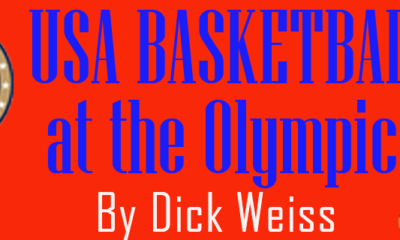This has been a season of twisted logic for Louisiana State’s enigmatic basketball team.
As soon as 6-10 freshman Ben Simmons signed with the SEC Tigers last November, the school launched a campaign blitz promoting his arrival that proclaimed, “25 is coming.” on billboards, print and social media.
Simmons, a 19-year-old Australian prodigy who has the skill to fill up his line as a point/forward, looked like a generational prospect when he played for Monteverde, Fla. Academy in 2015, leading his team to the three consecutive Dick’s Invitational prep school championships at the Garden. He had one of those early season Sports Center Moments in November when he scored 21 points and grabbed 20 rebounds before 51 NBA scouts against Wake Forest, a second tier Atlantic Coast Conference team, in the semifinals of the Legends Classic at the Barclays Center in Brooklyn.
But the Tigers lost, 81-80.
After Simmons gave the Tigers a 80-79 lead a sensational reverse layup in traffic with 21 seconds to play, he passed up two opportunities to shoot on LSU’s final possession after Wake had taken a one point lead on a pair of free throw and eventually the ball slipped away to a teammate, who missed a desperation three point attempt at the buzzer. We have since discovered that even though Simmons can shoot with both hands, he is has work to do on his mid range jump shot.
The Wake loss was a troubling omen. Simmons has constantly filled up his line all season, but the Tigers are 18-13, have an RPI hovering around 85 following a 99-77 loss to Kentucky in the final game of the regular season at Rupp Arena and have lost six games to teams with an RPI of over 150. Right now, they are on the wrong side of the NCAA bubble for an at large bid.
That has not stopped NBA Hall of Fame point guard Magic Johnson from calling Simmons the best all around player since LeBron James. Most NBA scouts still have Simmons penciled in as the No. 1 pick overall in the 2016 draft and one former Nike executive suggested Simmons could sign a shoe deal worth more than $100 million.
Simmons is expected to be at the center of a bidding war between shoe giants Nike, Adidas and Under Armour. Former Nike marketing executive Sonny Vaccaro, who played a role in the signing of a young Michael Jordan to his first sneaker deal, said the final number could exceed the $90 million multi-year deal LeBron James signed out of high school in 2003.
Simmons, who is averaging 19.7 points, 11.9 rebounds, 5 assists and 1.8 steals and is shooting 56 percent from the field and has 21 double doubles. He has only been held to single digits in scoring once this year. He is a great passer. He attacks the rim. But he also turns the ball over 3.1 times a game, fouling more than his team can afford and shooting just over 60 percent from the foul line during his team’s losses.
It has been a longer than expected season for this golden child, who could be destined to be just one of three first team All Americas in the last 40 years to miss out playing in an NCAA tournament game unless the Tigers pull off a miracle in the upcoming SEC tournament this week. Simmons is one of the few players who could have made the quantum leap to the NBA directly from high school. He could have marketed himself more effectively if he had picked a high profile program capable to advancing deep into March Madness. Had he signed with Kentucky or Duke, who have proven track records with one and dones, Simmons might have the center piece of college basketball, overshadowing Buddy Hield of Oklahoma and Denzel Valentine of Michigan State.
But he chose LSU– a middle-of-the-road SEC program that had only been to the tournament once since 2009– largely because his god father Dan Patrick was an assistant on Johnny Jones’ staff. Simmons even brought along a friend, guard Antonio Blakeney, a Top 10 prospect and a pure shooter from Florida. Simmons and Blakeney are two of the Tigers’ five double figure scorers, along with guards Tim Quarterman, Keith Hornsby and forward Craig Victor, but the team has struggled to become a cohesive unit and Simmons has become a lethargic, foul prone, disinterested player at times who had to sit for the first four minutes and 30 seconds against Tennessee because of an academic issue. Simmons played 36 minutes against the Vols and finished with 21 points and eight turnovers, matching his season high, in a 81-65 loss while playing with a finger injury.
Simmons was later declared ineligible to win the Wooden Award given to the best player in the country because of poor grades. Students must have a 2.0 GPA since enrolling in school to be eligible to the award and LSU has not revealed his grades. Kentucky students jumped at the chance to taunt Simmons at Rupp, chanting, “GPA, GPA” when he went to the foul line in the first half. He calmly made both free throws and stuffed his stat sheet with 17 points 11 rebounds and 7 steals.
“I believe I’m still the best player, so as long as I believe it, it doesn’t really matter,” Simmons said. “It’s their award. . . I’m not too worried about it. I just want to win. I’m a team guy. I want my team do to well.”
To be fair, LSU hasn’t always been at full strength. They had three bad losses games waiting for Victor to get eligible and Hornsby to get healthy. And the Tigers did get have an 85-67 victory over Kentucky in Baton Rouge that snapped the Cats’ 22 game SEC winning streak, and wins over Texas A & M and Alabama when their starting lineup was intact. But they also have last season losses to teams like Tennessee when the Vols best player– Kevin Punter– wasn’t available an 85-65 loss to Arkansas in which they were hurt by sloppy ball handling and poor team defense.
It’s time to pull a rabbit out of the hat. LSU’s last magic trick occured in 1986 when the 11th-seeded Tigers came out of nowhere to upset mighty Kentucky in the NCAA East Regional in Atlanta to advance to the Final Four in Dallas.
Simmons will also be one of just eight players in the past 50 years to become the first pick overall in a year where his team didn’t make the NCAA tournament field and the first since 1998 after the tournament expanded to 64 teams.
Here’s the list:
- 1998. Michel Olowokandi, 7-0 center, Pacific. (Los Angeles Clippers). This was an unusual pick in that Olowokandi was chosen ahead of Paul Pierce of Kansas and Vince Carter and Antawn Jamison of North Carolina following Pacific’s brief visit to the NIT.
- 1978. Mychal Thompson, 6-10 forward, Minnesota (MInnesota T-Wolves). He averaged 20 points and 10 rebounds for his team never finished high enough in the Big Ten to earn a bid.
- 1977. Kent Benson, 6-11 center, Indiana (Milwaukee). Just a year earlier, he was a starter on the Hoosiers’ historic 32-0 national championship team. But the Hoosiers lost so many bodies, they finished 16-11.
- 1976. John Lucas, 6-4 guard, Maryland (Houston). Lucas was the star of a team that finished 22-6 but was left out of a 32-team field.
- 1975. David Thompson 6-4 forward, NC State. (Atlanta). A year after the Wolfpack on the NCCA title, they were 22-6, but didn’t make the field.
- 1973. Doug Collins, 6-6 guard, Illinois State (Phladelphia). One of the stars of the ill fated 1972 U.S. Olympic basketball team, Collins averaged 29.1 points during his career in the Valley, but never played in the tournament.
- 1972 Larue Martin, 6-10 center, Loyola-Chicago (Portland). In another crazy draft, he was taken ahead of Julius Erving, Bob MacAdoo and Paul Westphal.
LSU has a history of superstar talents like Pistol Pete Maravich, Chris Jackson and Shaquille O”Neal whose teams under achieved in post season, winning a total of two NCAA games. Maravich, the NCAA’s all time leading scorer with 3,667 points in just three years and a 44.2 point average from 1968-1970, before the advent of the three point shot and LSU Assembly Hall has his name on it. But he never smelled the NCAA tournament.
Simmons is a linear descendant of those greats, but his legacy at the school could soon be forgotten unless LSU wins the SEC tournament this week and clinches the conference’s automatic bid to the NCAA Tournament.
Dick Weiss is a sportswriter and columnist who has covered college football and college and professional basketball for the Philadelphia Daily News and the New York Daily News. He has received the Curt Gowdy Award from the Naismith Basketball Hall of Fame and is a member of the national Sportswriters Hall of Fame. He has also co-written several books with Rick Pitino, John Calipari, Dick Vitale and authored a tribute book on Duke coach Mike Krzyzewski.









